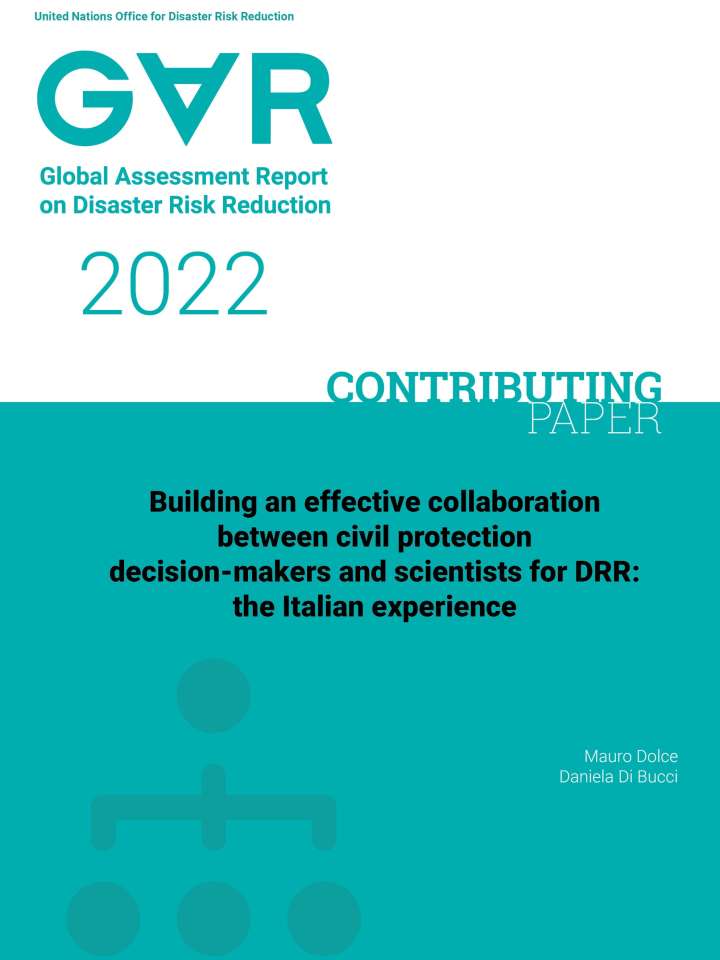- Home
- Documents and publications
Building an effective collaboration between civil protection decision-makers and scientists for DRR: The Italian experience
This contributing paper aims to examine the need to effectively implement implement the interplay between technical decision-makers, political decision-makers and the scientific community to achieve effective disaster risk reduction (DRR). In particular, the study examines efforts in Italy to build an effective collaboration between civil protection decision-makers and scientists, which has been addressed and ‘digested’ for years. Disaster science is progressively moving from single disciplinary research sectors, through a multidisciplinary approach, towards an interdisciplinary research. This path, however, still remains entirely within the scientific community. The envisaged final step, however, would be the implementation of a transdisciplinary, co-designed and co-produced research involving public bodies, business and civil society in the process.
The study indicates clear paths to collaboration between the different pillars. Civil protection decisions and actions must necessarily take into account the ineradicable uncertainties that are part of the models and their results. On the one hand, the scientific world is working to reduce the uncertainties of scientific evaluation, which is a difficult task to achieve. In this process, it is essential that scientific community and civil protection decision-makers together can refer to general principles of a purely political nature, such as the definition of acceptable risk, which can be translated into specific operational criteria for each situation under consideration. These criteria, together with civil protection procedures, must be shared with the political level and the whole community in a participatory process that also takes account of uncertainties, recognising that they must combine choices that should be predefined in peacetime.
Download
Editors' recommendations
- Inter-agency collaboration and disaster management: A case study of the 2005 earthquake disaster in Pakistan
- Reimagining climate governance in the digital age
- Data-driven citizen science changes the way communities deal with flooding
- IPCC report: how politics – not climate change – is responsible for disasters and conflict
- Inclusive approaches to disaster risk management - A qualitative review
Explore further
Is this page useful?
Yes No Report an issue on this pageThank you. If you have 2 minutes, we would benefit from additional feedback (link opens in a new window).
